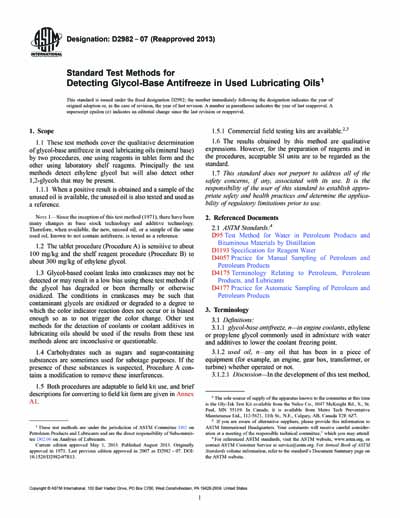Historical
ASTM D2982-07(2013)
Standard Test Methods for Detecting Glycol-Base Antifreeze in Used Lubricating Oils
1.1 These test methods cover the qualitative determination of glycol-base antifreeze in used lubricating oils (mineral base) by two procedures, one using reagents in tablet form and the other using laboratory shelf reagents. Principally the test methods detect ethylene glycol but will also detect other 1,2-glycols that may be present.
1.2 The tablet procedure (Procedure A) is sensitive to about 100 mg/kg and the shelf reagent procedure (Procedure B) to about 300 mg/kg of ethylene glycol.
1.3 Glycol-based coolant leaks into crankcases may not be detected or may result in a low bias using these test methods if the glycol has degraded or been thermally or otherwise oxidized. The conditions in crankcases may be such that contaminant glycols are oxidized or degraded to a degree to which the color indicator reaction does not occur or is biased enough so as to not trigger the color change. Other test methods for the detection of coolants or coolant additives in lubricating oils should be used if the results from these test methods alone are inconclusive or questionable.
ASTM International [astm]

